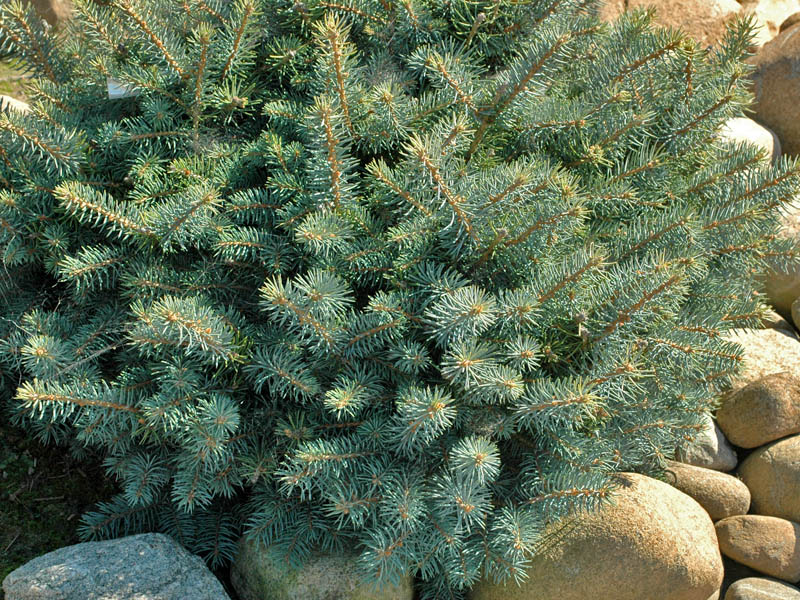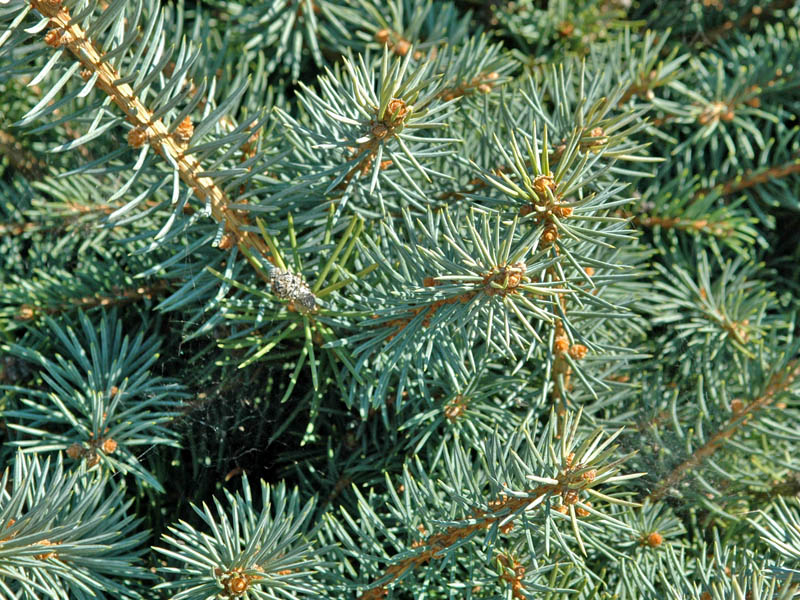| General Description | Dense tree with a pyramidal form and small yellow flowers. |
| ID Characteristic | Rigid, sharply pointed needles, green-blue to grey in colour, orange-brown young shoots that become grey-brown with age and pale brown cones with papery scales. |
| Shape | Upright pyramidal. |
| Landscape | Used as a specimen or in groups. |
| Propagation | Grafting is performed in the winter from January to February and overwintered in unheated structures until spring where it is then planted outside. Seedling rootstock Picea pungens is used with apical-wedge or side veneer graft. Selected forms can be propagated by semi ripe cuttings of side shoots, although these can take up to 2 years to strike. |
| Cultivation | Full sun in acid to neutral soil a ph range of 4.0-6.5. Well drained, moist soil and sheltered from cold winds. |
| Pests | Spruce gall aphids, spruce needle miner. |
| Habitat | Horticultural origin. |
| Bark/Stem Description | Young bark is orange-brown but becomes scaly and grey-brown as it matures. |
| Flower/Leaf Bud Description | Sometimes spherical but often conical with elongated narrow tips that are blunt on the end. Non-resinous buds with a caramel colour and loosely bunched scales. |
| Leaf Description | Rigid needles that are sharply pointed and blue-green to grey. Spreading and whorled on the branchlets but denser on upper surfaces. |
| Flower Description | Small insignificant yellow flowers. |
| Fruit Description | Cones are up to 6-10 cm long, green when young maturing to pale brown with papery scales. |
| Colour Description | Orange-brown young bark maturing to gray-brown, blue-green to gray needles, yellow flower and green young cones that mature to pale brown. |
| Texture Description | Coarse texture. |

